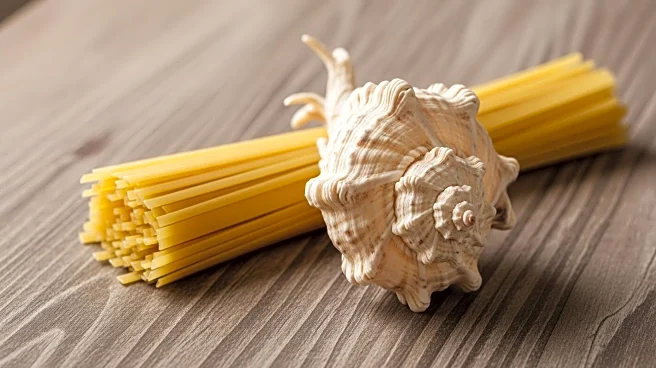Linguine with clams is a classic Italian pasta dish that has captured the hearts and palates of many around the world. Originating from the coastal regions of Italy, particularly in the south, this dish is celebrated
for its simplicity and the fresh flavors of the sea. The preparation typically involves linguine pasta cooked with fresh clams, garlic, olive oil, and parsley. Occasionally, a splash of white wine is added to enhance the flavors. In Italy, the dish is traditionally prepared in two ways: 'in bianco,' with oil, garlic, parsley, and sometimes white wine, and 'in rosso,' which includes tomatoes and fresh basil. The dish is often enjoyed without cheese to preserve the natural flavors of the clams and olive oil.
What the Word Meant
The term 'linguine' refers to a type of pasta that is long and flat, similar to fettuccine but narrower. The word 'linguine' itself means 'little tongues' in Italian, which aptly describes the shape of the pasta. The dish 'linguine with clams' is known in Italian as 'linguine alle vongole,' with 'vongole' meaning clams. This dish is a staple in Italian cuisine, particularly in regions close to the sea where fresh clams are readily available.
Before It Was “Linguine with Clams”
Before the dish became known as 'linguine with clams,' it was simply a way for coastal Italians to enjoy the bounty of the sea. The use of clams in cooking dates back centuries, with various regions in Italy having their own unique takes on seafood pasta dishes. The combination of pasta and clams is a natural pairing, as the pasta serves as a perfect vehicle for the briny, flavorful sauce created by the clams as they cook.
Where It Coalesced
The dish as we know it today likely coalesced in the southern regions of Italy, where both pasta and seafood are integral parts of the local diet. The simplicity of the ingredients—fresh clams, garlic, olive oil, and parsley—reflects the traditional Italian approach to cooking, which emphasizes quality and freshness over complexity. The addition of white wine or tomatoes in some variations adds depth to the dish, but the focus remains on the natural flavors of the clams.
Ingredients That Changed Everything
The key ingredients in linguine with clams are fresh clams, garlic, olive oil, and parsley. The type of clams used can vary, with palourde or carpet-shell clams being common choices. In some regions, the small Mediterranean wedge shell, also known as the Tellina or 'bean clam,' is used. The live clams are cooked quickly in hot olive oil with plenty of garlic, releasing a liquid that serves as the primary flavoring agent for the dish. This simple yet flavorful combination has made linguine with clams a beloved dish both in Italy and around the world.
















